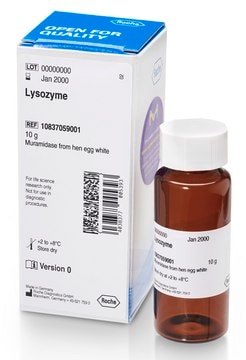311413
Perchloric acid
ACS reagent, 60%
Synonym(s):
PCA
About This Item
Recommended Products
grade
ACS reagent
Quality Level
vapor pressure
7 mmHg ( 25 °C)
form
liquid
reaction suitability
reagent type: oxidant
concentration
60%
impurities
≤0.001% N compounds
≤5 ppm Silicate and phosphate (as SIO2)
ign. residue
≤0.003%
color
APHA: ≤10
density
1.535 g/mL at 25 °C
anion traces
chloride (Cl-): ≤0.001%
sulfate (SO42-): ≤0.001%
cation traces
Fe: ≤1 ppm
heavy metals: ≤1 ppm (by ICP)
SMILES string
OCl(=O)(=O)=O
InChI
1S/ClHO4/c2-1(3,4)5/h(H,2,3,4,5)
InChI key
VLTRZXGMWDSKGL-UHFFFAOYSA-N
Looking for similar products? Visit Product Comparison Guide
Related Categories
Application
- How microstructures, oxide layers, and charge transfer reactions influence double layer capacitances. Part 1: impedance spectroscopy and cyclic voltammetry to estimate electrochemically active surface areas (ECSAs).: Perchloric acid was employed for electrode cleaning and preparation, essential in electrochemical studies for accurate measurements and analysis in physical chemistry (Schalenbach et al., 2024).
- Determination of phosphorus in commercially available milk using ion chromatography with perchloric acid deproteinization.: The research highlights the use of perchloric acid for deproteinization in ion chromatography, demonstrating its application in food chemistry and quality control (Yoshikawa et al., 2024).
- Assessment of essential and potentially toxic metals in raw cow milk from Mukaturi town, Oromia Regional State, Ethiopia.: Perchloric acid was utilized for the digestion of milk samples, facilitating the determination of metal content through analytical techniques in environmental chemistry (Tola et al., 2024).
- Fabrication and Characterization of an Electrochemical Platform for Formaldehyde Oxidation, Based on Glassy Carbon Modified with Multi-Walled Carbon Nanotubes and Electrochemically Generated Palladium Nanoparticles.: This study used perchloric acid in the modification of electrodes, crucial for developing advanced electrochemical sensors and analytical methods (Leniart et al., 2024).
Other Notes
Signal Word
Danger
Hazard Statements
Precautionary Statements
Hazard Classifications
Acute Tox. 4 Oral - Eye Dam. 1 - Met. Corr. 1 - Ox. Liq. 1 - Skin Corr. 1A - STOT RE 2
Target Organs
Thyroid
Storage Class Code
5.1A - Strongly oxidizing hazardous materials
WGK
WGK 1
Regulatory Listings
Regulatory Listings are mainly provided for chemical products. Only limited information can be provided here for non-chemical products. No entry means none of the components are listed. It is the user’s obligation to ensure the safe and legal use of the product.
PRTR
Class I Designated Chemical Substances
FSL
Group 6: Oxidizing liquids
Perchloric acid
Hazardous rank I
ISHL Indicated Name
Substances Subject to be Indicated Names
ISHL Notified Names
Substances Subject to be Notified Names
JAN Code
311413-1L:
311413-BULK:
311413-2.5L:
311413-100ML:
311413-4X100ML:
311413-500ML:
311413-3.6KG:
311413-100G:
311413-VAR:
311413-2.5L-PW:
311413-500ML-PW:
311413-100ML-PW:
Certificates of Analysis (COA)
Search for Certificates of Analysis (COA) by entering the products Lot/Batch Number. Lot and Batch Numbers can be found on a product’s label following the words ‘Lot’ or ‘Batch’.
Already Own This Product?
Find documentation for the products that you have recently purchased in the Document Library.
Our team of scientists has experience in all areas of research including Life Science, Material Science, Chemical Synthesis, Chromatography, Analytical and many others.
Contact Technical Service





